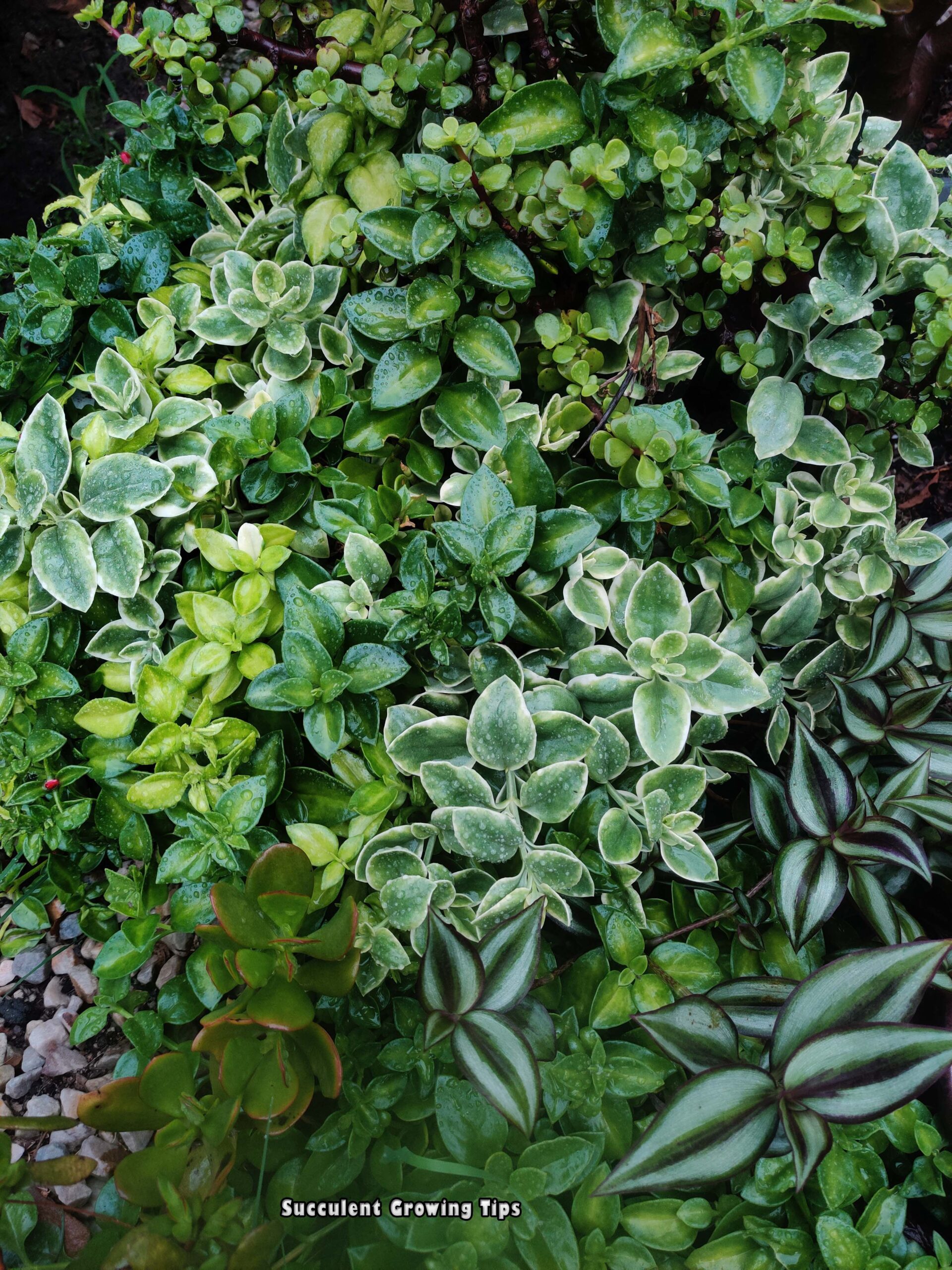Your cart is currently empty!

Succulent Weeds We Should Avoid Growing
It is pretty well known many, if not most, succulents are easy to spread and propagate. However, in some cases they are so easy it can be hard to contain and control them.
This pains me very much to say but there are succulents that you simply should not grow due to their weedy ways. Because succulents have become so popular many of the weedy varieties are also making rounds and, as beautiful as they are, if we love our native plants animals and nature in general we really should not be growing these.
In this article I’ll identify as many weed succulents as I’m aware of and explain, to my best ability, why they can be bad for the environment.
Succulent Weeds
Opuntia
One of the most problematic succulent genera for many parts of the world is Opuntia. Some of its species are also known as the Prickly Pear.
And yes, the Opuntia genus also includes the super cute and sought after Bunny Ears or Opuntia microdasys. My nursery, to this day, gets inquiries about this cactus and, surprisingly, many people are not aware this succulent can cause quite some damage if it escapes into the wild. Some Opuntia species are edible, grown for their fruit and pads.
Though many are grown for their hardiness and ornamental value. Here in Australia I see them in many Gardens despite being banned. Opuntia cannot be sold in certain States and is considered a noxious weed.
Kalanchoe ‘Mother of Millions’ & ‘Mother of Thousands’
Mother of Thousands and Mother of Millions are a few species of Kalanchoe such as daigremontianum or tubiflora. They are also sometimes known as Bryophyllum. I’m not getting into explaining which is which they are all noxious weeds.
As the name suggests, these plants are capable of producing loads of offspring. Each one of their leaves can carry about a hundred small plantlets that can become an adult plant.
Not only can they spread like wildfire they are also exceptionally hardy. If you get one by accident and leave it be, soon you. and probably your neighbours, will have thousands.
Agave
Large growing Agave, such as Americana, can become difficult to control and quick to spread. These guys can easily escape into the wild and cause havoc due to its size and extremely sharp spines.
Because of this impressive ability to spread and the hardiness some Agave species have become environmental weeds in a few parts of the world.
Purslane
Another succulent that is considered invasive weed is Purslane. It can be found anywhere in the worl,d spreads fast and can quickly start dominating a landscape
Aptenia Cordifolia
Aptenia cordifolia is considered an environmental weed in parts of Australia, especially coastal areas where it does the most damage. It spread super fast, growing over and killing of many smaller plants. The carpet it creates can be incredibly dense.
Harrisia
The Moonlight Cactus or Harrisia is considered an environmental weed in some parts of the world and can invade woodlands thanks to its tolerance of shade.
It tends to ramble on the ground and you would certainly not want to step on this prickly guy.
Kalanchoe Fedtschenkoi
This pretty succulent can spread fast and can grow leaf babies just like the ‘Mother of Thousands’.
It is a weed in areas of Queensland but otherwise does not seem to be prohibited anywhere else.
What Damage Can Succulent Weeds Do?
I think one of the best examples of how weeds can destroy an environment is that of Australia. After colonization prickly pear was introduced and soon rendered hectares and hectares of land unusable.
The Prickly Pear dominated the dry parts of Queensland and New South Wales forming dense shrubbery so bad no one could use the land. Great rewards were offered to anyone who could come up with a prickly pear eradication method.
About 60 million acres were infested by 1920s. Eventually a plan to introduce a prickly pear Predator called Cactoblastis cactorum moth came to effect and most of the prickly pears were eradicated. There’s so much more to this whole story but that’s for another day. If you’re interested to read the whole account I found a fascinating article about it and will link to it in the description of the video.
The problem with prickly Invaders is often the incredibly long and sharp spines. I know another nursery owner that had pierced his own hand on a prickly pear. They can also smother small native vegetation which can have a ripple effect on native animals that rely on these native plants.
They are very difficult to destroy as any bits left behind can start growing again.
In the case of invasive Kalanchoe, not only can these spread and outcompete native plants, they are also poisonous and can cause animals to get very sick and even die.
Weed control is important as introduced weeds can have lasting effects on plants and animals and, the problems can spread up the food chain.
I know some of these plants are cute but growing them responsibly should be considered especially because our natural world is already struggling so much.